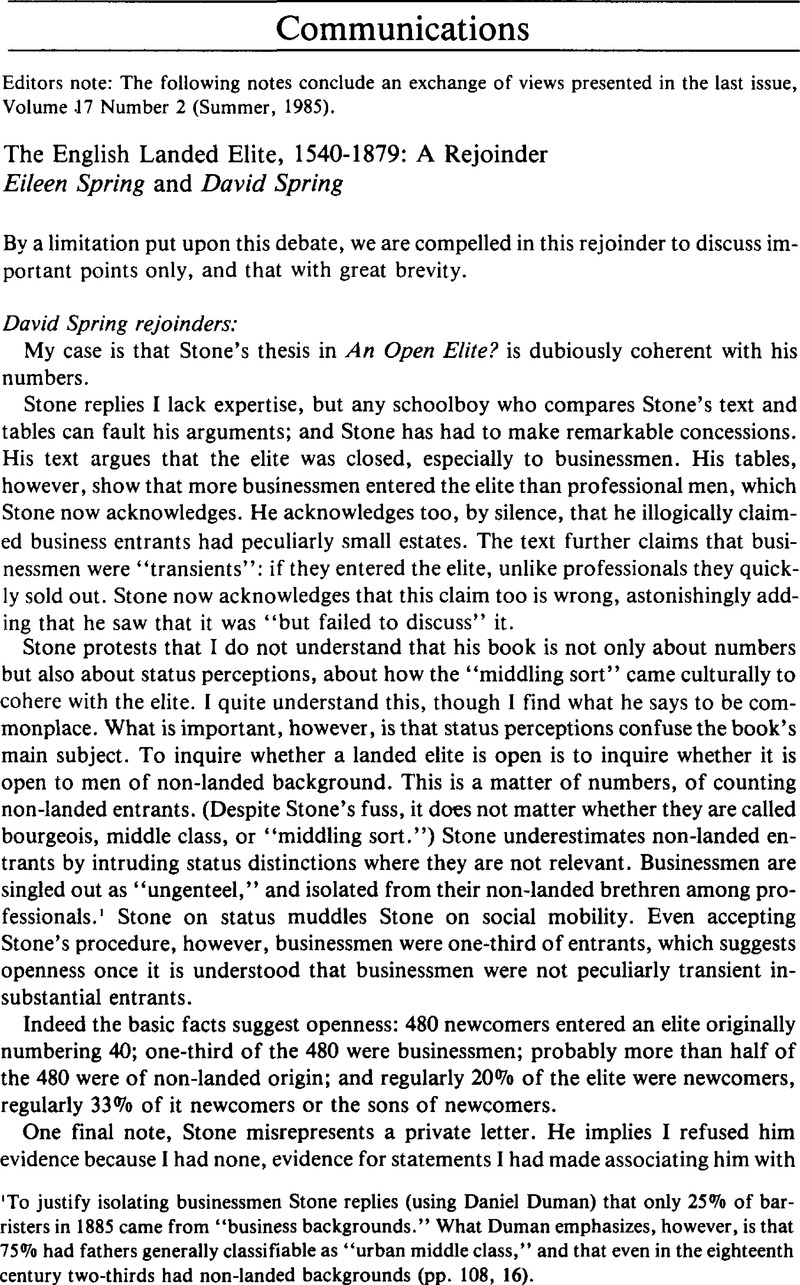No CrossRef data available.
Article contents
Communications
Published online by Cambridge University Press: 11 July 2014
Abstract

- Type
- Other
- Information
- Copyright
- Copyright © North American Conference on British Studies 1985
References
page 393 note 1 To justify isolating businessmen Stone replies (using Daniel Duman) that only 25% of barristers in 1885 came from “business backgrounds.” What Duman emphasizes, however, is that 75% had fathers generally classifiable as “urban middle class,” and that even in the eighteenth century two-thirds had non-landed backgrounds (pp. 108, 16).
page 394 note 2 I cannot find the promised discussion of this graph.
page 395 note 3 5 George IV c. 87. This is probably Parliament's only real general statement on portions, for Scottish entails were perpetual.
page 395 note 4 Williams, Joshua. The Settlement of Real Estate (1879), p. 220Google Scholar. See also Trumbach, , The Rise of the Egalitarian Family (New York, 1979), p. 103.Google Scholar
page 395 note 5 Nor can I discuss legal forms–Stone's emphasis on a form fundamentally impracticable, of no account.
page 396 note 6 The Guardian, Sept. 6, 1984.
page 396 note 1 Reviewed in this issue, pp. 332-34 (Editor).


